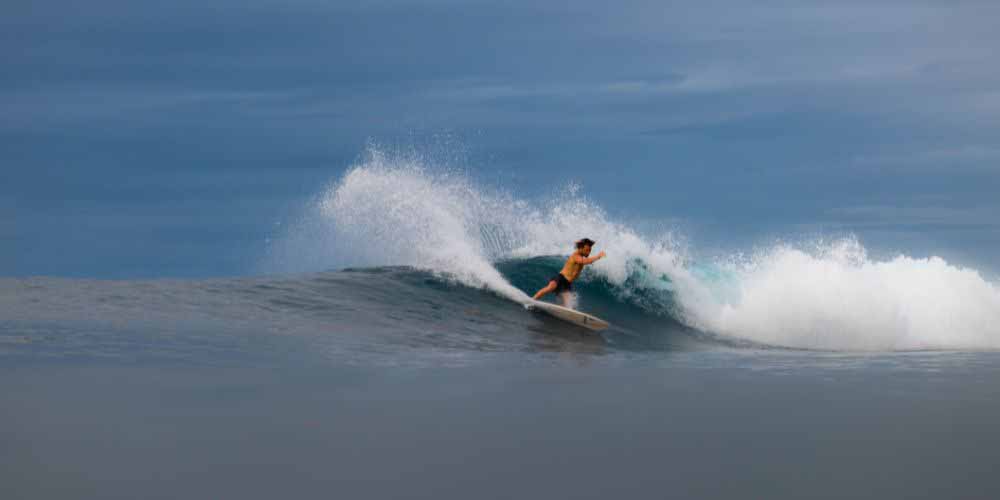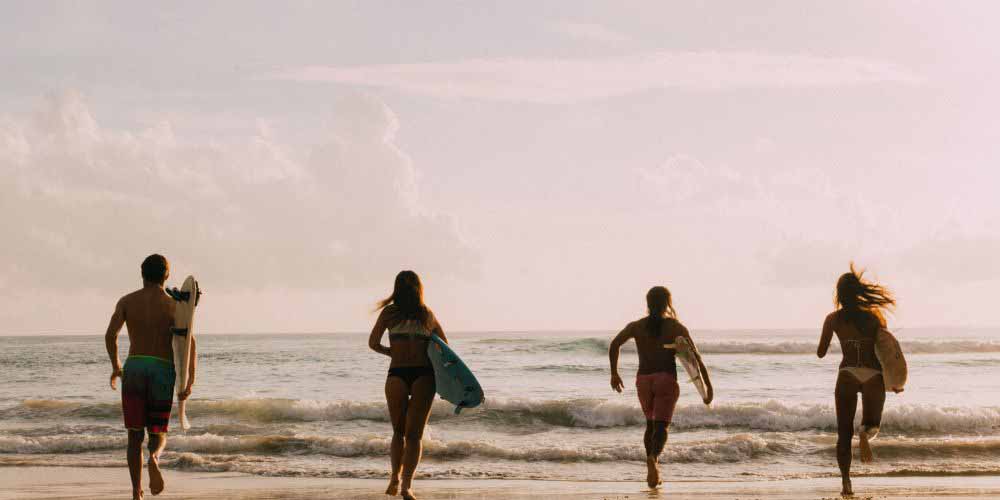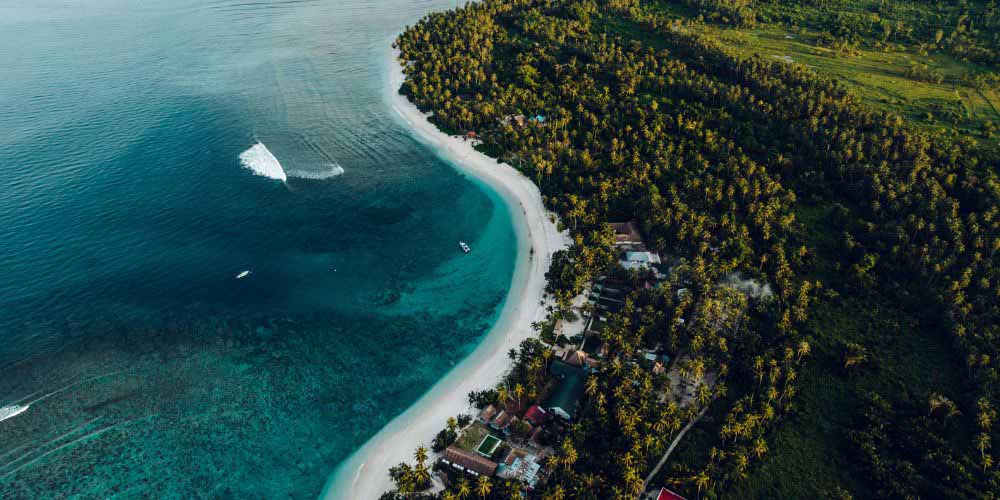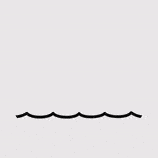Every day, in countless locations around the globe, surfers grab their boards and head to the sea. They hope to arrive and see perfectly peeling waves, ideal for making turns, getting tubed, or even launching airs.
Surfing is a lifestyle, and it all revolves around waves, the tide, and weather conditions. This guide will help you understand the ins and outs of wave formation, the various types of waves, and what to do when a wave breaks on you while surfing.
The Basics of Surfing Wave Formation
In the most simple terms, wind forms ocean waves. Waves caused by a nearby storm create wind swells, while waves that travel long distances due to larger storms are known as ground swells.
The farther a wave travels, the larger and more powerful it will become. Waves that only travel a short distance to reach the shore are generally small and weak.
Surfers love ground swells, but many will surf wind swell waves too, as ground swells aren’t always present.
Factors Influencing Wave Breaks
The shallow coastline waters must be half as deep as the height of the wave for it to break. The wave becomes bigger, stronger, and faster as it travels across the ocean, but it slows when it comes over shallow water. The friction between the swell and the bottom of the sea results in a breaking wave.

A breaking wave continuously loses its speed and power. That’s why advanced surfers prefer to catch waves before they break. Beginners often prefer the mushy, forgiving whitewater.
Wave Types and How They Break
There are three main types of surf breaks: beach breaks, reefs, and points.
Waves at a beach break over a sandy bottom. The quality and shape of the wave depend on the sandbars along the bottom of the ocean. Some beach breaks are soft and gentle, while others offer hollow tubes.
Reef breaks are many surfers’ favorite type of wave. The wave breaks over a rocky or reef bottom. Again, the formation of the bottom determines the shape and quality of the wave.
Many reef breaks have deep channels alongside them where waves do not break. The channels make paddling back to the lineup easier. Some of the most legendary waves in the world, like Hollow Tree’s in the Mentawai Islands of Indonesia, are reef breaks.
Point breaks are also highly sought-after surf spots. They generally create long, peeling waves. Point breaks can often hold large swells without closing out, making them ideal for ground swell surf sessions.
Finding the Perfect Break Point for Surfing
Finding the right surf spots depends on your personal preferences and skill level. Beginner surfers will likely find soft beach breaks ideal, as they don’t have to worry about sharp reefs or rocky bottoms when they wipe out. However, it’s important to remember that some beach breaks create powerful and hollow waves. Choose one that suits your ability level.

Intermediate and advanced surfers may prefer reef breaks and point breaks, as they create longer, often higher-quality waves. Some points and reef breaks are soft, and others are heavy, breaking over shallow reef or rocks. Speak with local guides native to the area you plan to surf before choosing a surf spot. They can help you determine which break is best for your ability level.
What To Do When a Wave Breaks on You
At some point in your surfing career, possibly on the very first day, a wave will break on you. It is bound to happen and is typically no reason to stress.
The best thing to do when a wave breaks on you is to remain calm and perform one of two maneuvers: a turtle roll or a duck dive. The turtle roll is ideal for anyone with a board that is too large or has too much volume to duck dive. It involves flipping your board over and holding onto it with two hands. Your body should hang under the water’s surface, perpendicular to your board.
Duck diving is an ideal way to get under a wave (or an entire set of waves) and out into the lineup. Use your foot or knee to push the board fully underwater, tucking underneath the wave to the other side.
Surfers must try to hang onto their boards whenever a wave crashes on them. Ditching your board and letting it hang behind you can be dangerous to other surfers and increase the chance of the board or leash breaking, putting you in a more difficult situation.
Experience the Most Thrilling Waves Break at Lances Right
Hollow Tree’s Resort, also known as Lance’s Right, is one of the most thrilling waves in the world. Located in Indonesia’s Mentawai Islands, it’s a barreling right-hand wave that wraps around the island, breaking over the reef. It’s an intermediate to advanced wave that is consistently named one of the top five in the world.

Hollow Tree’s Resort is a luxurious, accommodating resort located directly in front of Lance’s Right and a short drive or boat ride from 10 world-class waves. Whatever your surfing level may be, the expert guides at Hollow Tree’s Resort are dedicated to putting you on some of the best waves of your life. HT’s Resort is a premier destination for surfers looking for world class surfing experience.




